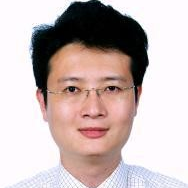Power Electronics in DC-Microgrid Systems
A special issue of Energies (ISSN 1996-1073).
Deadline for manuscript submissions: closed (31 July 2018) | Viewed by 43736
Special Issue Editors
Interests: high-power electronics converter topologies; motor drives; utility power electronics interfaces and application issues
Special Issues, Collections and Topics in MDPI journals
Interests: electric vehicle; power electronics; green energy
Special Issues, Collections and Topics in MDPI journals
Interests: battery management systems; facility location; logistics; regression analysis; analytic hierarchy process; battery powered vehicles; battery storage plants; diesel engines; distributed power generation; electrochemical impedance spectroscopy; energy storage; goods distribution; lead acid batteries
Special Issues, Collections and Topics in MDPI journals
Special Issue Information
Dear Colleagues,
We are inviting submissions to a Special Issue of Energies on the subject of “Power Electronics in DC-Microgrid Systems”.
With the rapid growth of direct-current (DC) coupled sources and loads, including photovoltaic (PV) generators, energy storage devices such as batteries and supercapacitors, light-emitting-diodes (LEDs), and electronics equipment, the low-voltage DC distribution networks and structured DC-microgrids are emerging as a natural platform to integrate distributed energy sources. However, there are a number of technical challenges: a lack of standardized interconnect and protection equipment, inadequate stability, and versatile control design. The availability of wide bandgap power semiconductor devices further pushes the power electronics design toward high efficiency and high power density for DC microgrids. In the past, the interest of the power electronics community was moving from a single power electronics converter to multiple distributed systems that encompass a number of converters connected in either series or parallel, forming a number of DC busses with different voltage levels. Recently, with the advance of new DC power conversion technologies, several ongoing standards, alliances, and initiatives are bringing the possibility of developing future homes, offices, buildings, campuses, datacenters, ships, satellites, aircrafts, and other electrical power systems to operate totally or dominantly in DC. Research is being carried out in both the system and component levels of modelling, control, and stability of structured DC-microgrids. Novel high-efficiency topologies and protections are also key nontrivial issues when developing practical DC-microgrids.
Prospective authors are invited to submit original contributions, survey papers, or tutorials for review and publication in this special issue on DC-microgrids.
Papers with applications in nature are particularly welcome.
Topics of interest for publication include, but are not limited to:
- Power electronic systems—converters and emerging technologies;
- Reliability and resiliency techniques
- Performance analysis and optimization
- Powering residential and commercial buildings
- DC-powered active and passive smart solar houses
- DC-powered appliances
- Advanced power electronics
- Storage technology
- DC-powered PHEV/EV charging
- Real-time monitoring and control
- Manufacturing and cost reduction approaches
- Partial fault detection
- Protection schemes
- Distributed energy generation and integration
- Standards and policies
Assoc. Prof. Ching-Ming Lai
Prof. Liang-Rui Chen
Guest Editors
Manuscript Submission Information
Manuscripts should be submitted online at www.mdpi.com by registering and logging in to this website. Once you are registered, click here to go to the submission form. Manuscripts can be submitted until the deadline. All submissions that pass pre-check are peer-reviewed. Accepted papers will be published continuously in the journal (as soon as accepted) and will be listed together on the special issue website. Research articles, review articles as well as short communications are invited. For planned papers, a title and short abstract (about 100 words) can be sent to the Editorial Office for announcement on this website.
Submitted manuscripts should not have been published previously, nor be under consideration for publication elsewhere (except conference proceedings papers). All manuscripts are thoroughly refereed through a single-blind peer-review process. A guide for authors and other relevant information for submission of manuscripts is available on the Instructions for Authors page. Energies is an international peer-reviewed open access semimonthly journal published by MDPI.
Please visit the Instructions for Authors page before submitting a manuscript. The Article Processing Charge (APC) for publication in this open access journal is 2600 CHF (Swiss Francs). Submitted papers should be well formatted and use good English. Authors may use MDPI's English editing service prior to publication or during author revisions.







